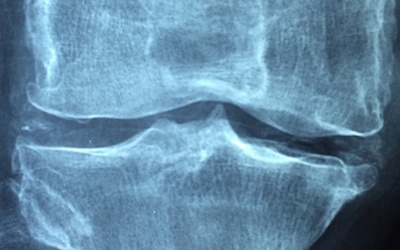Osteoarthritis is a growing health challenge, with current treatments offering only pain relief. Researchers from the University for Continuing Education Krems and IMC Krems – University of Applied Sciences are exploring 3D bioprinted hydrogels enriched with extracellular vesicles from mesenchymal stem cells to promote cartilage repair. This innovative approach could revolutionize osteochondral regeneration.
As Osteoarthritis (OA) is one of the fastest-growing health conditions, especially among the aging population, the development of new therapeutic approaches for osteochondral regeneration is needed. To date, treatment options for OA have primarily been palliative, focusing on pain relief and inflammation. However, they do not lead to a complete restoration of the joint’s mechanical function. Additive manufacturing techniques offer the possibility to generate organized tissue constructs to repair or replace damaged tissues. These constructs are generated by printing layers which are composed of cells and biomaterials. For tissue engineering approaches, mostly stem cells are used, but it has been shown that the secretome of cells, including extracellular vesicles (EVs), is the primary mediator of their regenerative properties.
The overall aim of this study is to evaluate the potential to 3D bioprint EVs derived from mesenchymal stem cells isolated from the Hoffa fat pad (HFP-MSC-EVs) within two different biomaterials, namely decellularized extracellular matrix-hyaluronic acid-silk fibroin versus gelatin methacryloyl hydrogels. Another aim of the study is to determine whether these constructs promote the repair of a cartilage defect in an ex vivo model.
EV-Functionalized Hydrogels for Cartilage Repair
HFP-MSC-EVs will be isolated by ultrafiltration and characterized by nanoparticle tracking analysis and Western Blot. Hydrogels will be fabricated, and EVs will be added prior to the crosslinking of hydrogels. Various functional assays will be performed to determine, for example, the influence of the EV-functionalized hydrogels on the migration, proliferation, and chondrogenesis of bone marrow-derived stem cells and OA chondrocytes, either in a co-culture model or when cells are directly encapsulated within the EV-functionalized hydrogels. To assess the cartilage repair capacity of EV-functionalized hydrogels, a defect will be created in bovine osteochondral plugs and hydrogels will be integrated. The healing capacity will be analyzed by histological staining for cartilage-specific extracellular matrix expression.
The project “3D printing of extracellular vesicles from Hoffa fat pad derived mesenchymal stem cells for cartilage regeneration” is funded by GFF Niederösterreich (Grant agreement number K3 F 744/005 2019) and will run until mid-2027.
Contact:
Assoc. Prof. Andrea De Luna, University for Continuing Education Krems, project lead
Prof. Harald Hundsberger, Hans Peter Weitzenböck and Franz Herzog, University of Applied Sciences Krems, project partner
